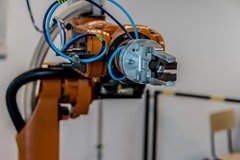While there’s no doubt that automation has already begun to revolutionize the global labor market, there remains significant debate about the impact of this technology.
While some argue that automation will displace significant numbers of blue and white-color workers by 2025, for example, others suggest that this type of innovation will ultimately create more jobs than it costs.
This appears to be borne out by the numbers, with a report by Gartner claiming that automation and artificial intelligence (AI) created 2.3 million jobs in 2020 while eliminating just 1.8 million.
In this post, we’ll look at the role of DC motors in automation and ask whether these controllers are the best option within this field of innovation?
Why are DC Motors Used and What are Their Main Benefits?
Drive motor selection remains a serious consideration in the world of automation, and there’s no doubt that DC controllers have certain characteristics that make them a preferable choice.
In simple terms, a DC motor converts direct current electrical energy into mechanical energy, while there are at least four different types of DC controllers used throughout the industry.
In terms of basic application, the type of DC motors sold through Allied Electronics work well in robotics as they enable hardware to be battery powered. This offers significant advantages for a wide range of robotic applications, particularly from the perspective of mobile and collaborative robots.
Another key benefit of a DC motor is that it offers variable speed, in the form of a wide range both above and below the rated speed. This allows far greater control, while offering more potential in terms of the number of robotic applications that a DC motor can successfully power.
Arguably the biggest advantage of using a DC motor in robotics is the high level of torque, which makes them capable of controlling heavy loads and driving applications that require sustained acceleration.
As a result, DC motors are widely used in fields such as manufacturing and the automotive trade, where there’s also a demand for high volume output on a daily basis.
What are the Top Trends for DC Motors in the Field of Robotics?
Increasingly, those who work in automation are becoming preoccupied with mobility and minimizing their carbon footprint, and the use of DC motors is helping individuals to achieve these goals.
The reason for this is simple; as modern robots are required to enable mobility and compactness in the modern age, so that they can more effectively match the capabilities of the human hand in real-time.
In this respect, a high-power density in a smaller and lighter motor highlights the unique advantage of DC controllers, which as we’ve already said are ideal for applications that require variable speed and increased torque.
The mobility of today’s applications also depends heavily on battery power, which makes energy efficiency and footprint critical factors.
Fortunately, certain DC motors can achieve efficiency levels of up to 90%, even when used to drive high torque applications across a range of industries.

